Chapters, Canada's largest bookseller, carries a great selection of art magazines and I wanted some! Rather than the usual fare, today I walked out with three totally new magazines: Professional Artist; Artists & Makers; and Cloth Paper Scissors.
Here's a few of the featured articles in Professional Artist (published by Jannett R Roberts, Orlando, FL): Can Creativity be Taught?; Become an Artist Author; Teaching from Home VS Renting a Space; Ten Secrets to Selling Art on Etsy and more. An interesting sounding lineup and I'm looking forward to reading them all, but I was immediately drawn to " Can Creativity be Taught?", by Vicki Krohn Amorose, because I believe it can be and should be.
It has been suggested that when Alan Shepard became the first American in space, on May 5, 1961, math and science became the focus of schools and the arts were phased out as nice but not necessary. I suppose it seemed like the right decision at the time, I mean we are human and prone to making tiny errors in judgment from time to time. Now, however, it seems that we are seeing the benefits of teaching the arts. I've seen it over the years... as Executive Director of the Visual Arts Centre, Orleans, in Ottawa, I was often asked by groups with various disabilities to put together art programs for them. This is called "Therapeutic Art".
A regular program involved a group of adults with acquired brain injuries. Art helped the brain's neuroplasticity to create new pathways around the ones that were damaged. It's actually quite amazing and if you are interested in reading more about this I can suggest the book "The Brain That Changes Itself" by Norman Doidge, MD, published by Penguin Books, ISBN 978-0-14-311310-2.
Art has also proven it's value to therapists, particularly when dealing with children who are unable to express their issues in words. This is called "Art Therapy". I took a summer course, some years ago, on this subject, thinking it was about therapeutic art, but found it so interesting that I completed the course and it really helped me with developing therapeutic art programs.
Albert Einstein said "You can never solve a problem on the level on which it was created." The magazine article also quoted Sir Ken Robinson, an advocate of updating the education system, putting creativity on the level of literacy, as saying "The more complex our world becomes, the more creative we need to be to meet its challenges."
The article ends with this final paragraph:
"Creativity is not a single skill and cannot be taught with well-tested models. The teaching of creativity must be a creative act in itself: reframing the problem, asking new questions, and making novel combinations. This is why artists are the prime candidates for becoming teachers of creativity. By advancing our collective creative abilities, we advance culture. Artists can do a world of good." Something to think about!
So I still have to read the other two magazines, but Artists & Makers (published by F+W Media, Ft Collins CO) looks very interesting too. Lots of articles on marketing and selling your art and the business of art.
Cloth Paper Scissors (published by F+W Media, Ft Collins CO) is outside the box of traditional art, featuring mixed media, collage and some neat crafts, which for me gets my creative juices flowing to find ways to incorporate some of the ideas into my own work... creating creative thinking!
Today's Painting Tip: Loosen Up, Gain Confidence
“And if you ever do a survey, you’ll find that people prefer illusion to reality, ten to one. Twenty, even.” (Judith Guest)
There is something magical about a painting that leaves something to the imagination and somehow viewers connect with that because it allows them to fill in the blanks using their own filters and familiarity. When I was painting realism I had to keep reminding myself that I was creating a painting... not a photograph. It's a hard habit to break!
Okay, so how to loosen up? First start with larger brushes to get your painting blocked in. I suggest, if you paint in the 16" x 20", more or less size, that you should start with a minimum of a 1" brush, but a 2 1/2" brush would be even better! Using a flat brush you can learn to use both the fat side and the thin side to your advantage. It is possible to do an entire painting with a large brush, but if you must get into some detail, gradually decrease the size of the brush you use but skip the really small ones.
Here's an exercise that I use in my classes to help students loosen up. Set up a still life, a plant, a bowl of fruit, anything. Use only large brushes and work quickly. Set the timer for 30 minutes and GO! Also pay attention to how you can manipulate brush strokes to create, say a leaf, with just one stroke. If you do this once a week you will find yourself finishing faster as you gain more confidence and experience. As this happens, set your timer for less time. Have fun with it. It's just an exercise and can be easily painted over!
The pear was a really quick demo, I think about 5 minutes, but it will give you the idea of what we are going for in this exercise.
This week I added more layers to the background. First was a layer of white for snow in the lower portion of the painting. Then in the top portion I added some Interference Red paint and some Interference Blue over the snow. This is a totally awesome paint, that actually has no pigment. The shimmery colour it adds to a painting is due to mica flake mixed into the binder. This paint shows more colour over dark paint backgrounds than lighter ones, but I love the ethereal feeling it gives to a painting... and with this product, less is more, so just a thin layer, otherwise it just looks like dirty white paint.
After letting the interference paint dry I applied a light brushing of Iridescent Gold paint, by applying a thin layer to the fat side of a flat brush and just dragging it across the painting so that it catches the high points of the texture. This increases both the depth because of layering, and the shimmer because it is metallic. As with the interference paints the metallics usually have no added pigment.
I should point out that interference and metallic colours can be mixed with regular colour to create some interesting effects. Play with it, have some fun and be creative!
Next week the foreground will start to take shape.
Best wishes,
Susan

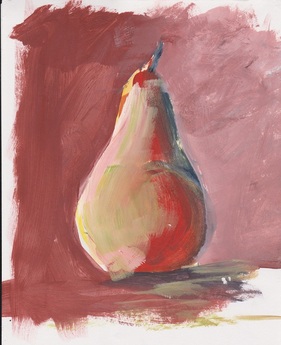
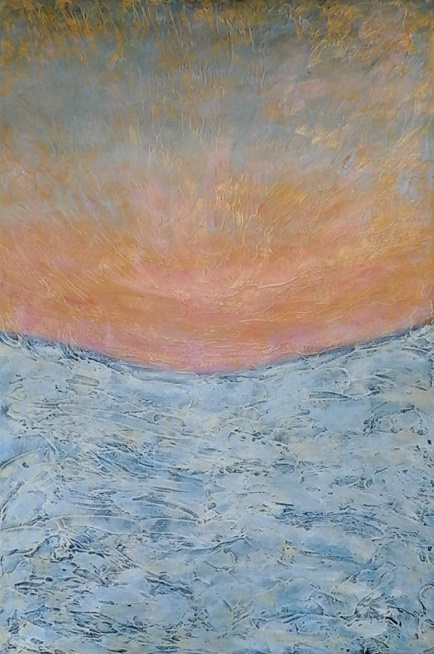
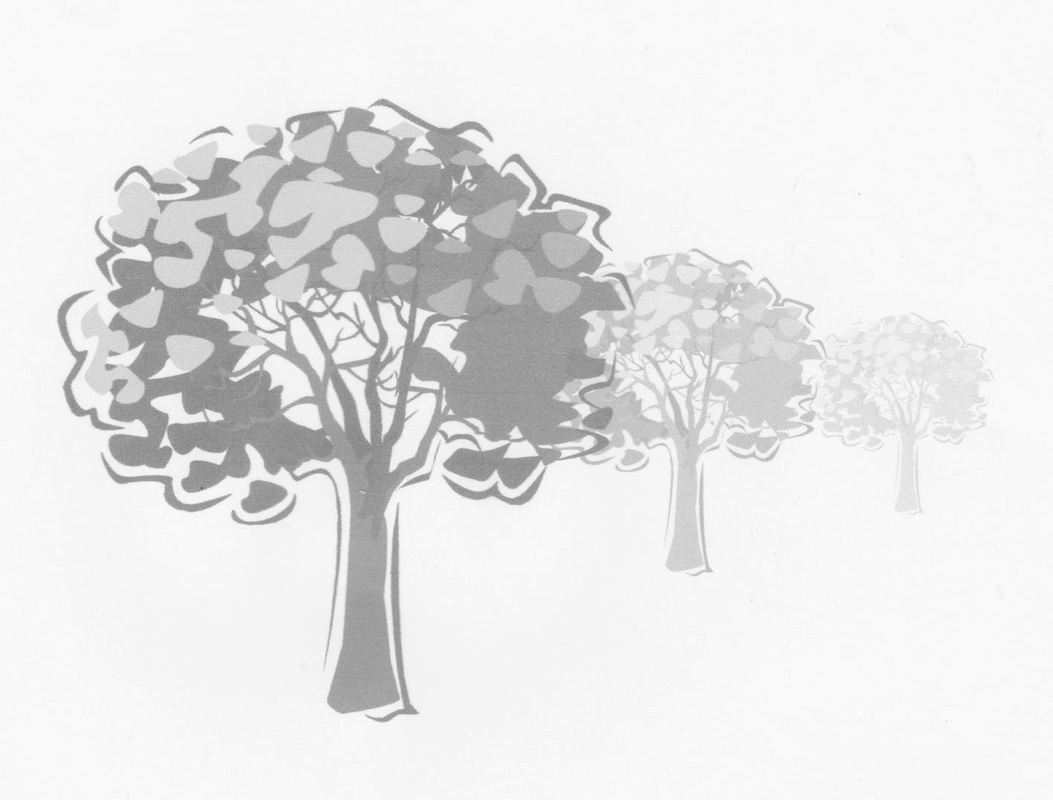
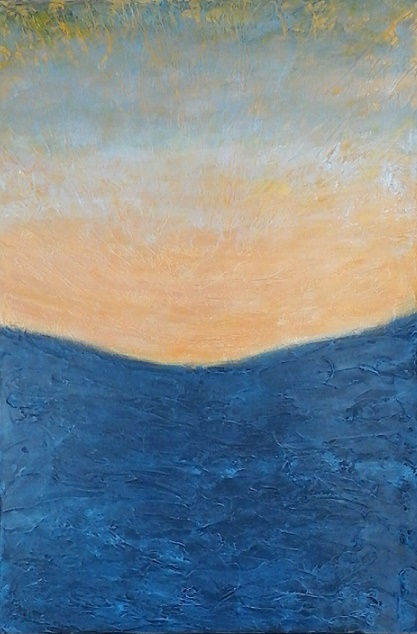
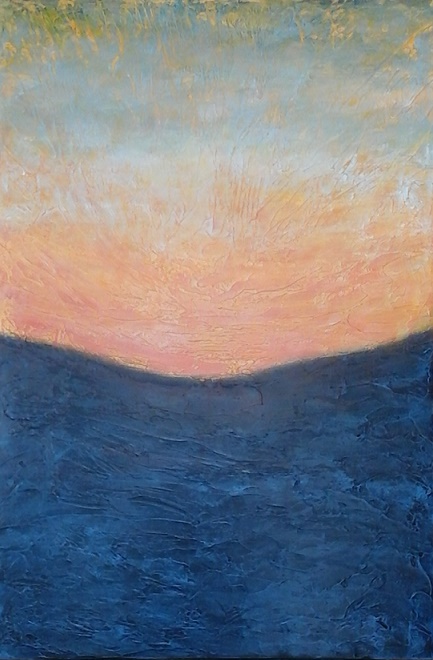
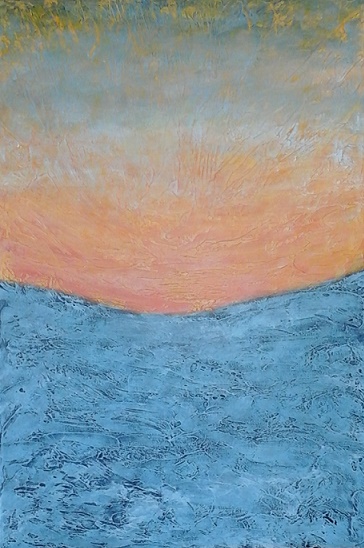

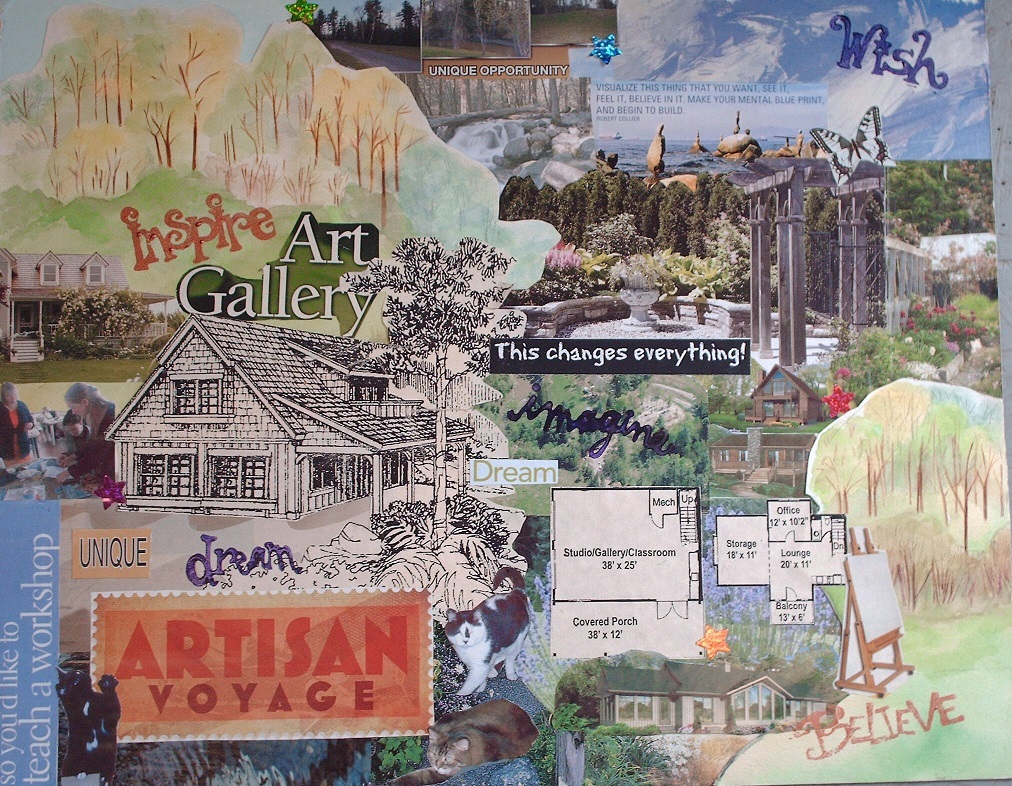
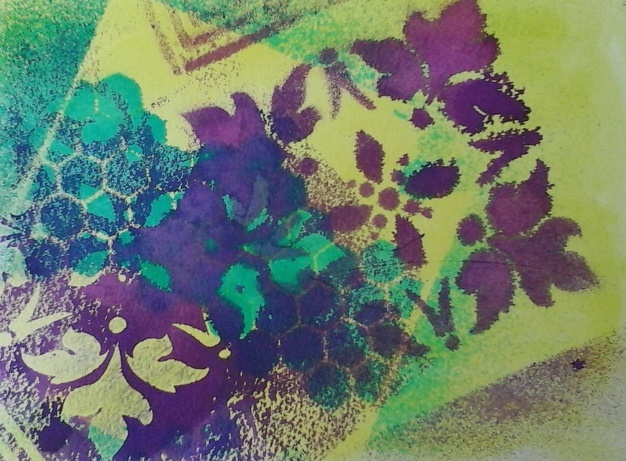
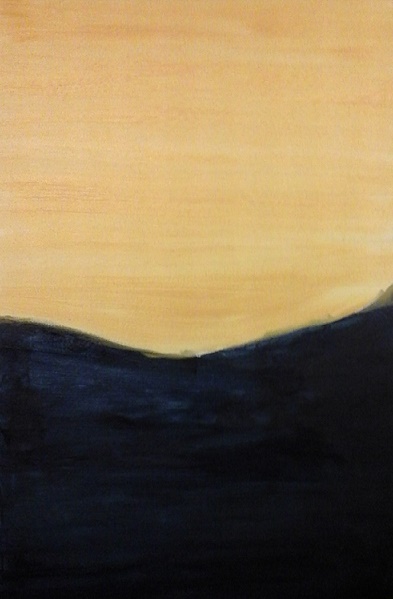
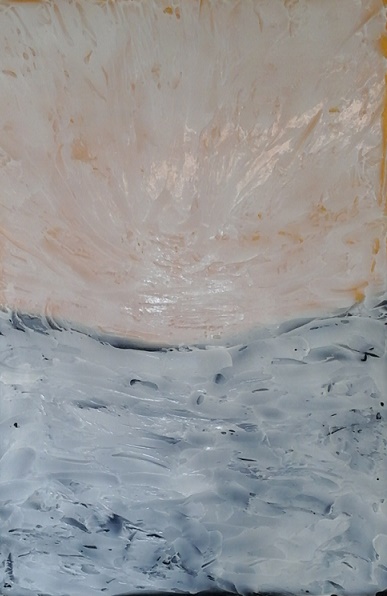

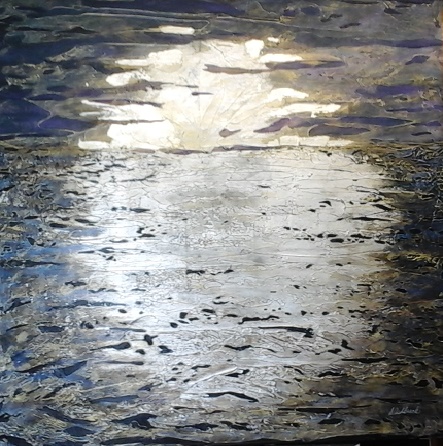
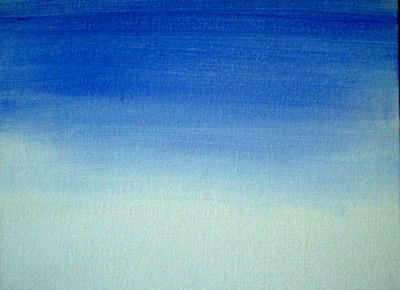
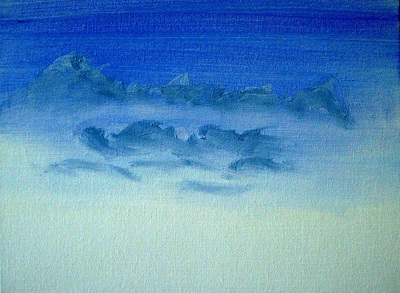

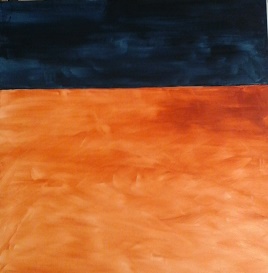
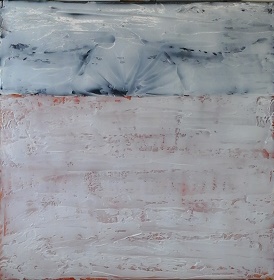

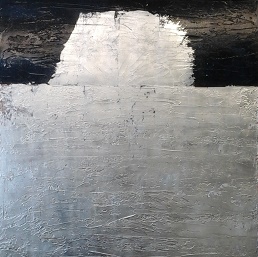
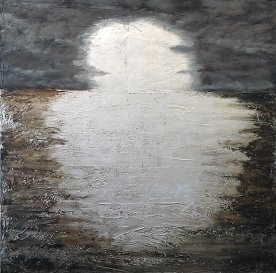
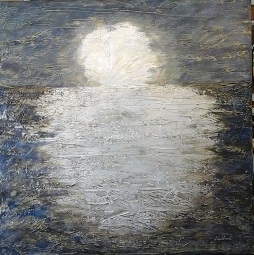
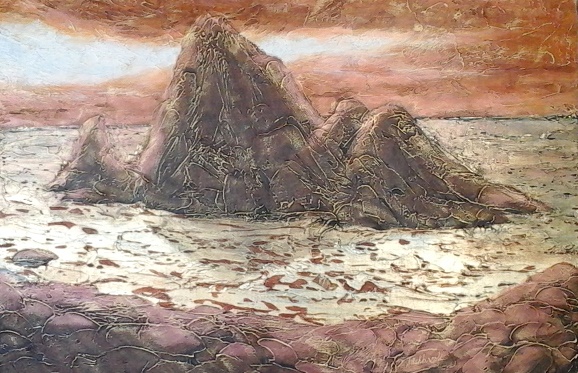
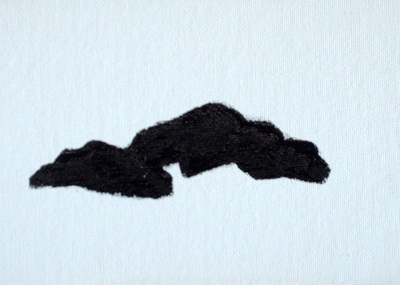
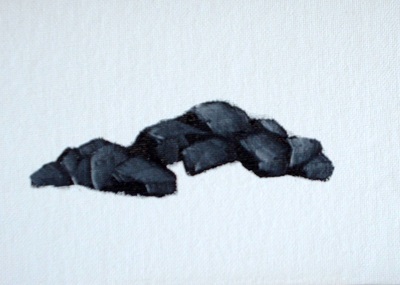
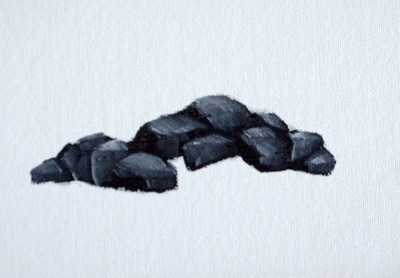
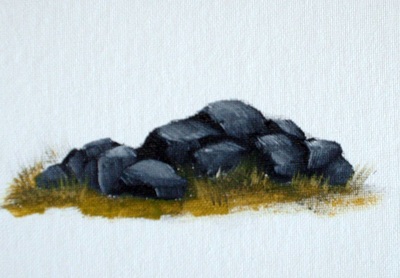
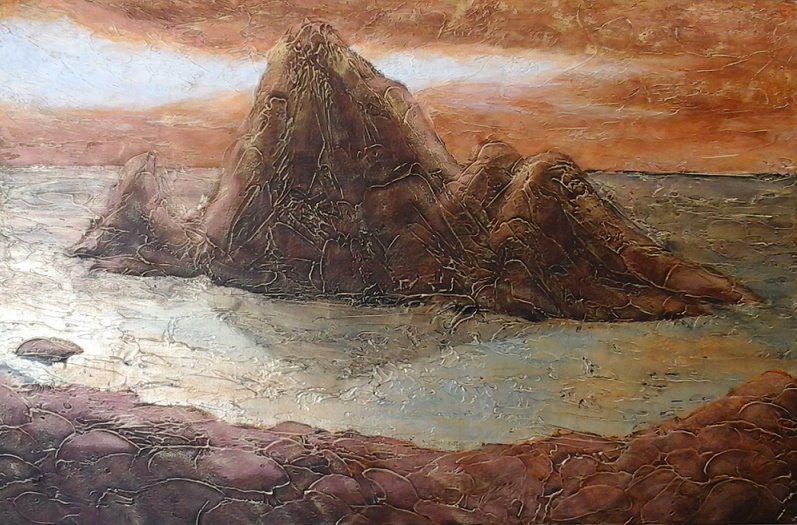
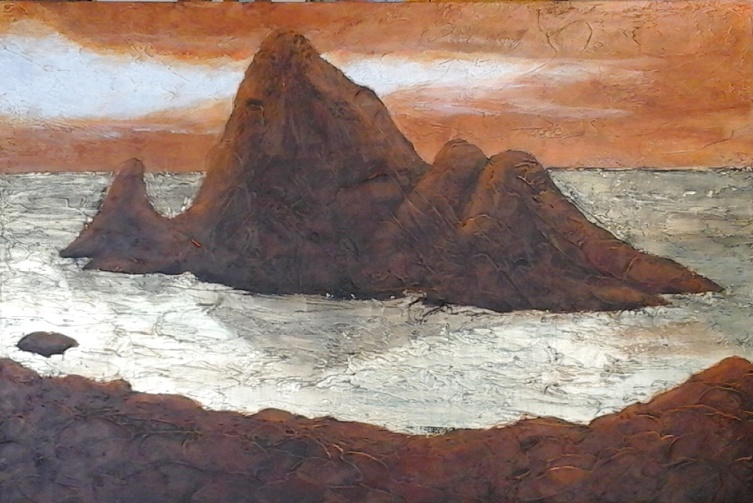
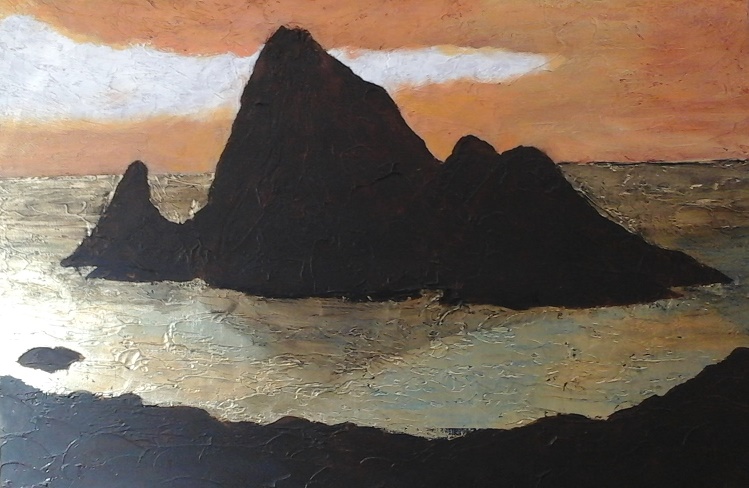
 RSS Feed
RSS Feed